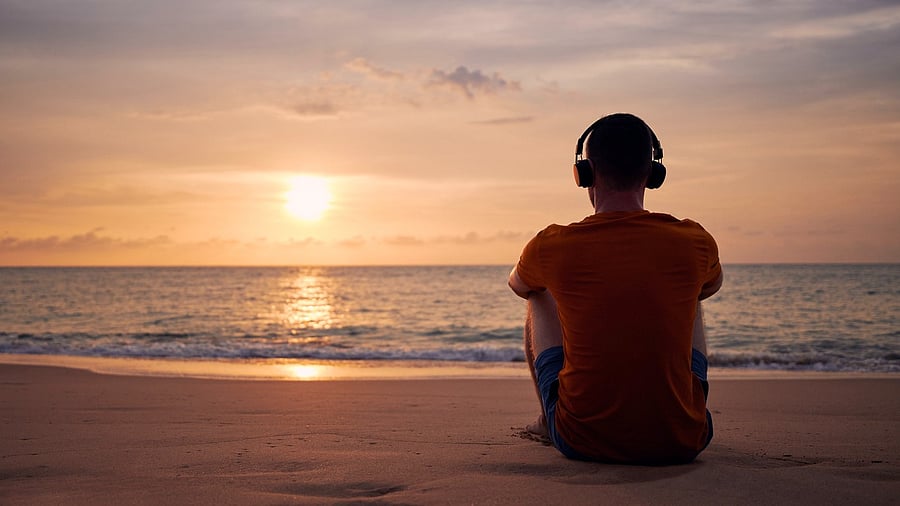
Photo for representational purpose.
Credit: iStock photo
Step out into any Indian city today, and you will notice a common accessory. Not sneakers or backpacks, but the little white—or sometimes neon-coloured—earbuds tucked into almost every ear. From early morning joggers vibing to Bollywood beats to metro commuters catching up on podcasts to delivery partners weaving through traffic with playlists blasting, being plugged in has become the new urban uniform.
Music makes the Monday blues bearable, podcasts turn traffic jams into classrooms, and even a voice note from a friend can brighten the dullest commute.
But here’s the twist: that tiny device that makes the city feel like your personal music video could also be turning the streets into something far riskier.
India already records some of the world’s highest road accidents, with over 1.5 lakh fatalities reported every year. Overspeeding, drunk driving, and reckless overtaking dominate the headlines, yet a quieter threat has been sneaking into the mix -- audio-distracted walking, cycling, and driving. Think about it: when you’re plugged into your favourite track, the world fades out. A song on shuffle can make you tune out the very sounds designed to keep you safe.
Take Bengaluru’s MG Road or Delhi’s Connaught Place. Teenagers cross streets without looking up from their phones, riders with helmets sneak in one earbud, and pedestrians bop along to beats while cars swerve past. It has almost become part of the urban landscape—an unspoken agreement that music and movement go hand in hand, even in traffic. Somewhere along the way, the line blurred between private enjoyment and public responsibility. Unlike smoking in public or drunk driving, wearing earbuds carries no stigma. In fact, it is seen as cool—almost aspirational. Wireless earbuds are productivity tools, style statements, and even status symbols. They let you multitask, blur work and leisure, and stay plugged into your world. Therefore, while everyone agrees driving drunk is reckless, walking around with earphones seems harmless. Harmless it is not.
Consider a college student rushing to class, headphones in, lost in a playlist. A split second of inattention while crossing a busy intersection could turn tragic. Or a biker enjoying a podcast, oblivious to an ambulance stuck behind. These are not rare, far-fetched examples—they are everyday risks that most of us have witnessed, if not experienced. The danger is silent but constant, hidden under layers of normalisation.
Some states have rules in place. The Motor Vehicles Act allows traffic police to fine drivers for using mobile phones. But earbuds? That is a loophole. Motorcyclists often ride with one ear free—technically legal, but still distracted. Pedestrians, who account for nearly 17% of road accident deaths in India, face no restrictions at all. Enforcement is patchy, and even where rules exist, nobody takes them seriously. Unlike helmets or seatbelts, “no earbuds” is not yet part of our collective road-safety culture.
That culture shift is what we need. Remember how “Don’t Drink and Drive” became second nature? Or how seatbelts went from optional to non-negotiable? Audio distraction deserves the same level of awareness. Imagine a trend where influencers say, “One less earbud, one more life saved.” With youth leading the charge, awareness could spread faster than any rulebook.
While many earbuds have “ambient mode”, which lets in external sounds while you listen, these features are marketed as lifestyle perks, not safety essentials. If tech companies teamed up with road safety groups and branded them as life-saving tools, it could make all the difference.
At its heart, this issue is about how we share space. Roads are not just tarmac—they are ecosystems. Every unheard honk or siren is not just background noise; it is communication, part of the rhythm that keeps the city alive. Ignoring it in favour of a playlist is like muting the soundtrack of survival. The irony is that the very thing earbuds promise—connection—can disconnect us from the immediate reality: our surroundings.
No one is saying to ditch earbuds altogether. They are fun, functional, and addictive. They help us escape stress, power through workouts, and focus on tasks. However, the smarter move knows when to press pause. The rhythm of the city—the honks, the chatter, the chaos—might not make for the best playlist, but it is the sound you need most. Because staying alive can be as simple as listening.
So next time you step out, maybe let one ear breathe. Save the beats for the gym or the café. Out on the streets, the world is already playing a track—and it is one you do not want to miss. Safety is not about muting life’s soundtrack. It is about tuning in to the one that matters most.
(Ishayu is with the University of Leeds, UK and Neelatphal is an assistant professor and co-project director (ICSSR-JJM), Department of Media Studies, at Christ Deemed to be University, Bengaluru)